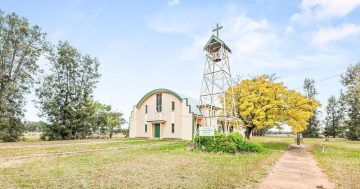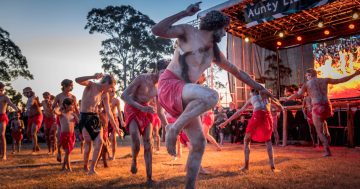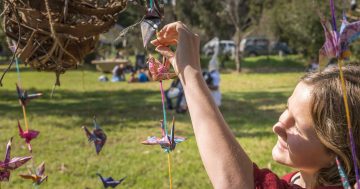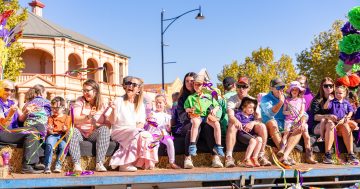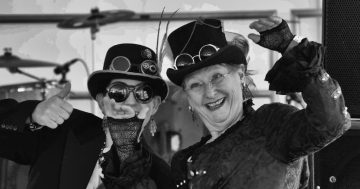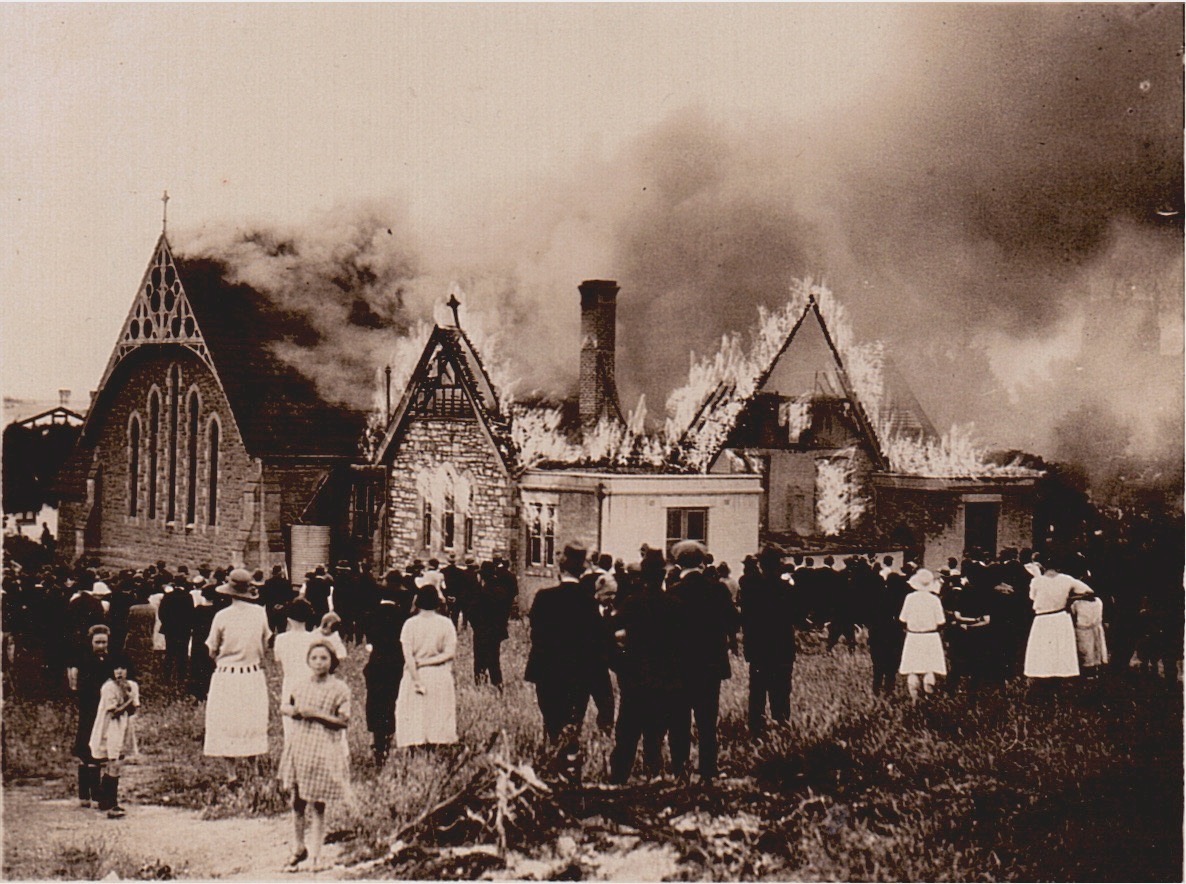
Fire destroys the roof of St Saviour’s Hall in 1925. Fire struck a second time in 1961 after which a new tile roof was built. Photo: Linda Cooper collection.
In the shadows of a grand cathedral, St Saviour’s Parish Hall in Goulburn has its own extraordinary social history.
It prevailed through two horrendous fires and hosted everything from polling booths to popular Indian festivals as well as being a temporary church.
So it’s fitting the Festival of Small Halls summer tour is heading to St Saviour’s Hall on Friday (12 January). The festival chooses the best folk and contemporary acoustic artists performing at two of our country’s largest festivals, and sends them on the road to tiny halls in communities all over Australia.
Rising to prominence with her wit, humour and social commentary, folk-pop-punk-poet Alana Wilkinson will perform alongside acclaimed Scottish fiddle player Ryan Young who will focus on traditional Scottish music, bringing new life to old, often forgotten tunes.
As well as in Goulburn, they will be performing at halls in Dalton and Galong and elsewhere in NSW, including the South Coast.
Hosting the annual festival is typical of the versatility and popularity of St Saviour’s Hall. Rock and roll nights, a Christmas party for about 60 Goulburn Mulwaree volunteers and the Southern Inland Goulburn Malayalee’s Onam Festival were among recent celebrations there.
Goulburn has acquired numerous large and small public venues since 1874 when this sandstone building served as the church for St Saviour’s parish while the cathedral was being built. Designed by Edmund Blacket, who also designed the cathedral, the hall had a schoolroom addition in 1913, designed by prolific architect EC Manfred. In 1923 a brick toilet block was added.
From the 1890s the hall hosted the diocese electoral synods (gatherings of church representatives) until the Lilac Time Hall and later Goulburn Workers Club provided synod venues. Sunday school was there weekly.
It became a popular venue for wedding breakfasts and still hosts wedding receptions these days, as well as reunions, market stalls, stage productions, family milestones, even pre-polling ahead of political elections.

Volunteers hosted by Goulburn Mulwaree Youth Council gathered at St Saviour’s Hall for their Christmas party last month. Photo: Cr Jason Shepherd.
Having the option of small and large halls and a commercial kitchen and flanking the commercial business district have made it a prime site for gatherings.
Parish life of all churches intersects with the community, and this hall has often been the link between the two. Certainly Archdeacon Ward had a wider community in mind when he delivered an unusual and passionate address in the spring of 1921.
The hall was arranged as a lounge room, with parishioners gathered around occasional tables. The gathering was dubbed a “dry social”. In other words, no tea, coffee or refreshments were served. The idea was for mental refreshment.
Giving his view of what the cathedral parish should be to the city, he said: “We are out to make this city of Goulburn the city of God, but we will not do that until we realise we are builders, builders of the Kingdom of Christ.
“Sometimes I despair,” he said. “I feel at times as if I could say, ‘Don’t be so damned respectable’. Let us have more life in our church, more out-and-out Christianity, not this damned neutrality.” He described the church as a construction train, and they had to part with all the “deadheads, passengers and slackers.”

Bringing people into St Saviour’s parish, this hall often finds itself at the centre of community gatherings. Photo: John Thistleton.
Two fires almost destroyed the hall – one in 1925 and the other about 1961. According to one recollection of the 1961 blaze firemen playing cards at the station ignored two boys who had raised the alarm after seeing smoke billowing from under the stage inside. It was only when someone rang the station the fire was taken seriously.
A 1934 entrance gate from Bourke Street honours Annie Grovenor and the Women of St Saviour’s Guild, which she founded. “It is safe to say of her that her time and money were always at the disposal of those less fortunate,” her obituary recorded in 1945.








